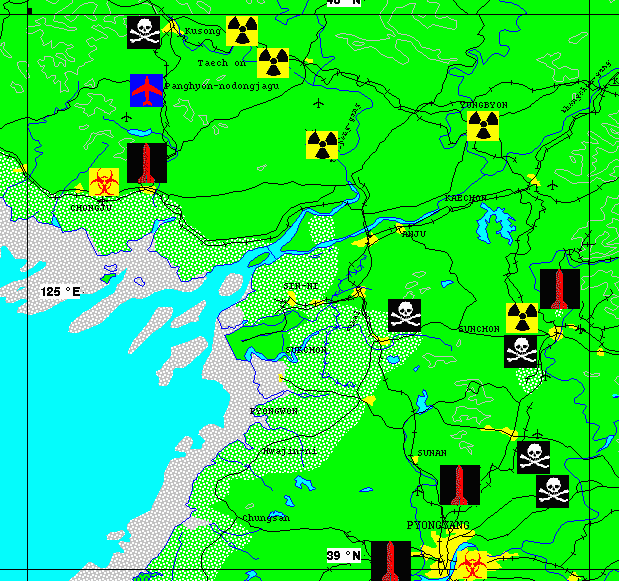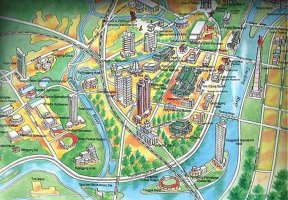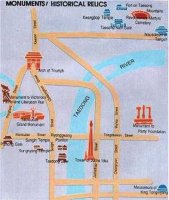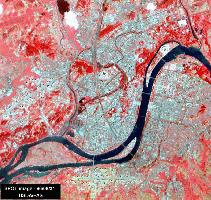




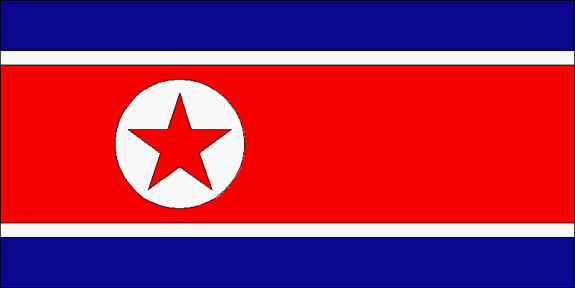
The Pyongyang subway is renowned for its depth. The Puhung (Reconstruction) station is dug 100 meters under Pyongyang. Because it was dug 150-meters underground (versus 10-30 meters in Seoul), escalators must be used for going up and down inside the subway. The subway was constructed at such a depth underground to cope with times of emergency like war, but has a tendency to consume too much electricity for its operations.
The "Integrated Command Post for Nuclear Warfare" was built at Mt. Chidang in Changsan-dong, Sosong District of Pyongyang by 1994. Construction of "the Nuclear Watch Guard Post" [at Solbong of Cheyukchon, Angol of the Mangyongdae District, Pyongyang] began in May 1993 and was scheduled for completion by November 1993. Reporedly in a plenary meeting of party cadres of the DPRK People's Army held at the beginning of December 1992, Choe Kwang, chief of General Staff of the Ministry of People's Armed Forces announed that it had been decided to finish the construction of the "Nuclear Watch Guard Post" at Solbong of Cheyukchon, Angol of the Mangyongdae District, Pyongyang, by 1993. This information is based on statements by Yi Chung-kuk, 26, who defected from North Korea in March 1994. According to Choi Ju-hwal, who in 1995 defected from his post as Colonel and Chief of joint venture section of Yung-Seong Trading Company under the Ministry of People's Army, missile production facilities include 125 Factory [also called the "Pyongyang Pig Factory"] in the Hyengjesan Area of Pyongyang. Nuclear weapons related facilities include the College of Nuclear Physics at Kim Il-Song University, and the College of Nuclear Physics within Kim Cha'ek University of Technology.